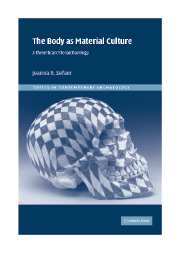1 - Bodies and boundaries
Published online by Cambridge University Press: 05 June 2012
Summary
They have cut the Gordian knot with a well-honed sword. The shaft is broken: on the left, they have put knowledge of things; on the right, power and human politics.
Latour 1993: 3This is a book about bodies as material and historical phenomena. Bodies intrigue us because they promise windows into the past that other archaeological finds cannot. They are literally the past personified. As the mortal remains of the very people who created and lived in the past, they bring us face to face with history. Above all, it is the physicality of the body that draws our interest. We instinctively recognise their bodies as we recognise our own; they are essentially us.
Attendant to this intuitive concern with identifying with the physical body runs an increasing public interest in what can be learnt from a body after its discovery, as illustrated by the success of the recent British television series Meet the Ancestors. Spindler's (1994) popular book The Man in the Ice proudly proclaims the account as ‘a classic of scientific discovery, [which] shows us the fullest picture yet of Neolithic man, our ancestor’. A clear message emerges from these examples: bodies provide solid scientific information about the past. They are not simply morbid sensations or curiosities, but have real scientific value. The archaeologist is no longer either a romantic Indiana Jones figure or a boffin in an ivory tower, but a scientist in a white lab coat.
- Type
- Chapter
- Information
- The Body as Material CultureA Theoretical Osteoarchaeology, pp. 1 - 11Publisher: Cambridge University PressPrint publication year: 2006



